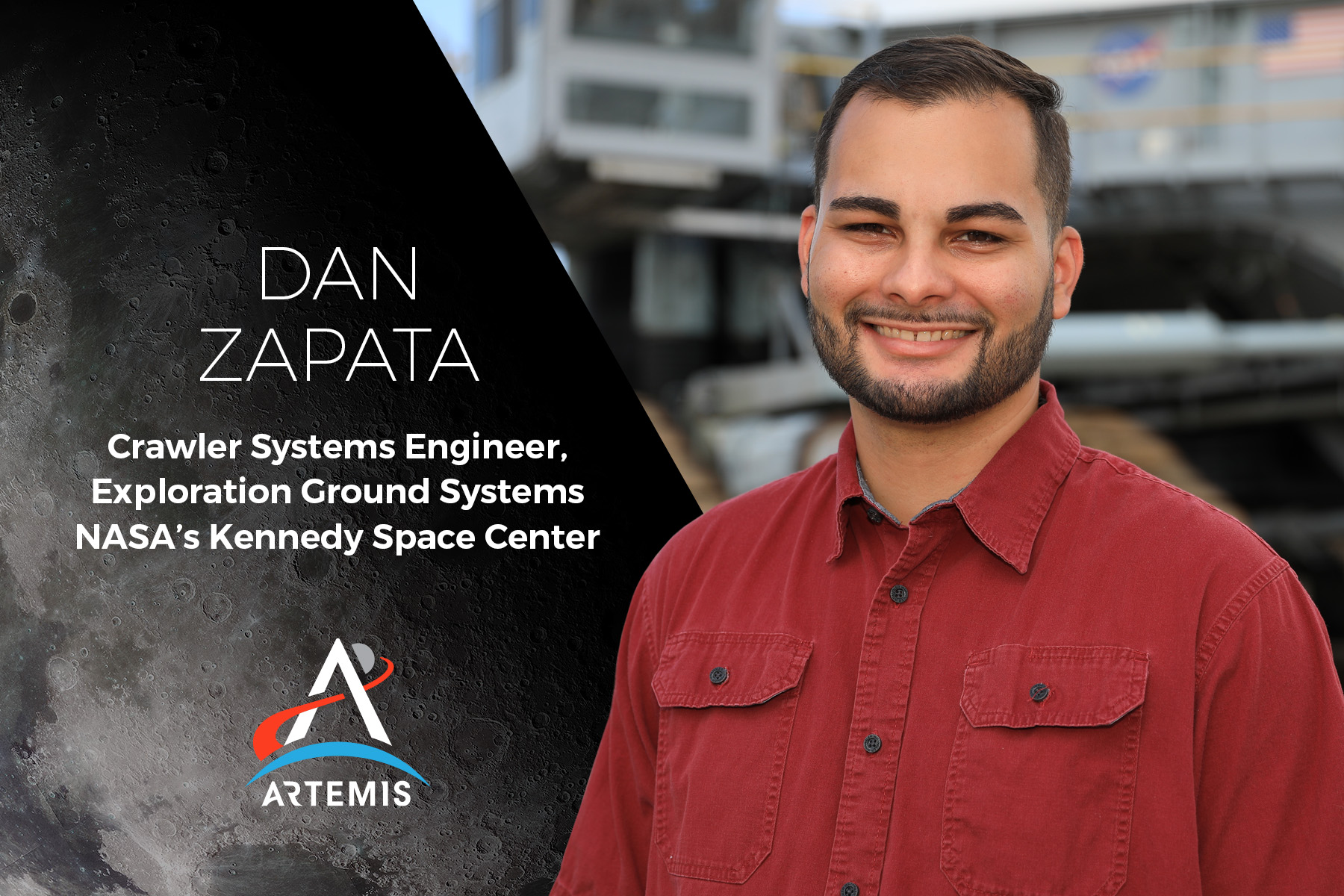Lee esta historia en español aquí.
Twenty-nine-year-old Dan Zapata knew from the time he was in second grade he wanted to be an engineer. It started with a pen pal project at his school that connected him with an electrical engineer who designed printed circuit boards.
That experience led to a Bachelor of Science degree in electrical engineering from the University of Central Florida, followed by a job with a Lake Mary, Florida, company, designing and drafting protection and control systems for power substations.
Working for the nation’s space program was not on his radar until he saw a job listing with Jacobs, a contractor at NASA’s Kennedy Space Center in Florida. During his interview, he learned the open position was for an engineer for the crawler transporters, massive tracked platforms that move rockets from the Vehicle Assembly Building to the launch pad.
“I didn’t know anything about the crawlers or the space program. The first day on the job, I saw the crawler yard for the first time. There were these two really big pieces of machinery. I had never seen anything like it in my life. They looked like giant tanks. I remember being in awe for a few months,” Zapata said of his initial encounter with NASA’s six-million-pound transporters.
That was in mid-2017.
Nowadays, Zapata is one of seven certified crawler drivers at Kennedy. Certification took more than two years of on-the-job training to achieve.
“The first time I drove was very nerve wracking,” Zapata said. “It reminded me of the first time I rode a motorcycle – a combination of fear and excitement. It was on a giant straightway, going a half-mile per hour, but because it was a giant crawler, it felt the same as going 80 or 90 miles per hour in a sports car. My main goal was to keep it straight. It sounds simple, but you have to stay vigilant. I was glad I kept it straight on the crawlerway.”
These days, Zapata is an experienced member of the transporter team that will take NASA’s Space Launch System (SLS) rocket on an eight-hour, four-mile journey to Launch Complex 39B for the Artemis I launch, a historic first step toward returning to the Moon. The team will use crawler-transporter 2, which has been modified and upgraded to carry up to 18 million pounds.
Zapata, whose parents moved to the U.S. from Puerto Rico, knows his family will be proud to see Artemis I launch. He will share that sentiment.
“From a historic standpoint, this is the next great mission for the crawler, which has served the program since Apollo,” Zapata said. “To be part of that, I will feel humbled, privileged, and a little nervous. But at the end of the day, we are there to perform, to get the SLS to its launch position. It will be strictly business for us to get that rocket where it needs to go.”
Learn more about Exploration Ground Systems.
Check out some of our other I am Artemis features.
Image Credit: NASA





























